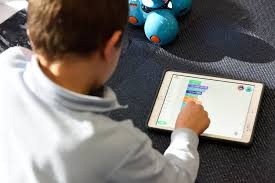What are some of the games that can be used to teach values?
Games For Teaching Values to Children
- Kindness. This game is suitable for a household or for a classroom.
- Gratitude. Ask each child to write a list of all the things he would like for his next birthday or upcoming holiday.
- Sharing.
- Honesty.
How do you teach values in a fun way?
Fun Ways to Teach Values
- Plant a garden. Growing even a single flower can demonstrate how perseverance pays off—but it’s more fun to nurture a small garden instead.
- Reach out to an older person.
- Have a toy wash.
- Design homemade thank-you cards.
- Start a scrapbook.
- Clean up for good.
- Be a pal.
What is the educational value of children’s games? By playing games, students become more motivated to learn, pay attention and participate in set tasks. Games help students to become a part of a team as well as take responsibility for their own learning. They can also be a great classroom management tool, helping to motivate a class.
What are value games? The Value Game is a survey tool that asks the right questions to the right people in order to reveal the value of outcomes. It shows how your stakeholders value the outcomes they experience relative to other products they also value.
What are some of the games that can be used to teach values? – Additional Questions
What is value of game in game theory?
The value of the game, denoted by v, is the value that a player, say Player 1, is guaranteed to at least win if he sticks to the designated optimal mix of strategies no matter what mix of strategies Player 2 uses.
Why games are important for students?
Research has shown that games are essential for healthy development in early childhood and beyond. Play lets children practise what they know, and also what they don’t. It allows them to experiment through trial and error, find solutions to problems, work out the best strategies, and build new confidence and skills.
What are PAL games?
The subscription has now launched in Asia, but – as spotted by VGC – some PS1 games are using the PAL (Europe, Australia, New Zealand) version instead of the NTSC (Asia, America). That means they’re presented in 50Hz instead of 60Hz, resulting in a lower refresh rate and therefore lower framerates. LEARN MORE.
What was the first Valve game?
Valve Corporation/Video games
What is saddle point and value of the game?
Definition (Saddle point). In a zero-sum matrix game, an outcome is a saddle point if the outcome is a minimum in its row and maximum in its column. The argument that players will prefer not to diverge from the saddle point leads us to offer the following principle of game theory: Proposition (Saddle Point Principle).
What are the benefits of game?
THE BENEFITS OF PLAYING VIDEOGAMES
- They speed up response times.
- They encourage teamwork.
- They stimulate creativity, focus and visual memory.
- They improve strategy and leadership.
- They teach languages.
- Critical thinking.
What is the purpose of game?
Key components of games are goals, rules, challenge, and interaction. Games generally involve mental or physical stimulation, and often both. Many games help develop practical skills, serve as a form of exercise, or otherwise perform an educational, simulational, or psychological role.
How effective is game based learning?
Results from analyses showed that use of game- based learning is highly effective for improving learning outcomes. The learning process is usually done with face to face in the classroom. Teachers do their job as teachers by conveying information to the students conventionally.
How educational games help students learn?
According to research, using games in teaching can help increase student participation, foster social and emotional learning, and motivate students to take risks. One study of the popular multiple-choice quiz game Kahoot found that it improved students’ attitudes toward learning and boosted their academic scores.
What is the importance of learning activities?
The importance of learning activities
align to outcomes and assessment. engage students in active learning. facilitate the practice of core skills prior to assessment. provide feedback on student progress towards outcomes.
Are games effective learning tools?
From the empirically-based studies 34 out of the 69 found positive outcomes from using games, 17 had mixed results, 12 reported “no significant difference” with traditional instruction approaches – and one study found traditional methods more effective.
Which of the following are benefits of game-based learning?
What Are The Benefits Of Game-Based Learning?
- Increases A Child’s Memory Capacity.
- Computer & Simulation Fluency.
- Helps With Fast Strategic Thinking & Problem-Solving.
- Develops Hand-Eye Coordination.
- Beneficial Specifically For Children With Attention Disorders.
- Skill-Building (e.g. map reading)
Are educational games effective for kids?
Today, we know that play benefits brain development. It may promote problem-solving, too. And, as I explain elsewhere, opens in a new windowcertain types of fantasy play may help children develop better “executive function” skills, like the ability to stay focused.
What is game-based learning strategy?
What Is Game-based Learning? Game-based learning (GBL) is the application of games to learning using tailor-made content or third-party content, all within a gaming environment. The goal is to engage and motivate learners to acquire new skills, enhance existing ones or change behavior.
What are the advantages of game-based learning on child development?
Top benefits of game-based learning
Game-based learning: Helps problem-solving — Game-based learning can help students solve problems by fostering skills like understanding causation, logic and decision making they can use in life outside of school.
What is an example of game-based learning?
Example Of Game-Based Learning #3: Assessing With Kahoot
He used the popular tool Kahoot to create formative assessments or review games. Kahoot is a quiz game where teachers can write multiple choice questions and Kahoot will track the points of everyone in the class and export the data to a spreadsheet for analysis.
What are the types of game-based learning?
The three types of GBL are:
- 01 – Board games. Monopoly can be considered an educational game. It has all the necessary elements: a story, characters, points, competition, and many other aspects.
- 02 – Real life games. The environment here is the real world.
- 03 – Digital games. The environment here is online.




